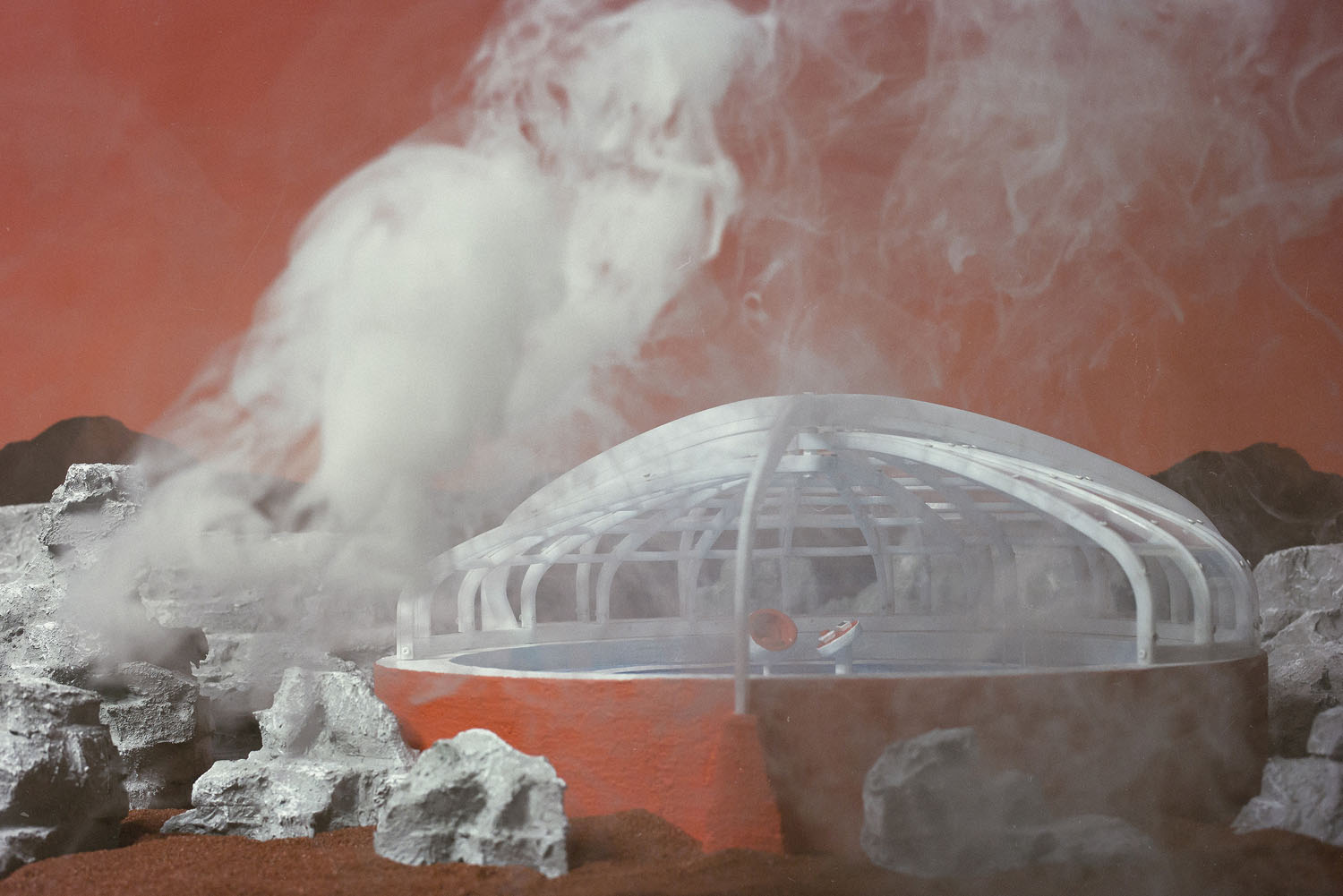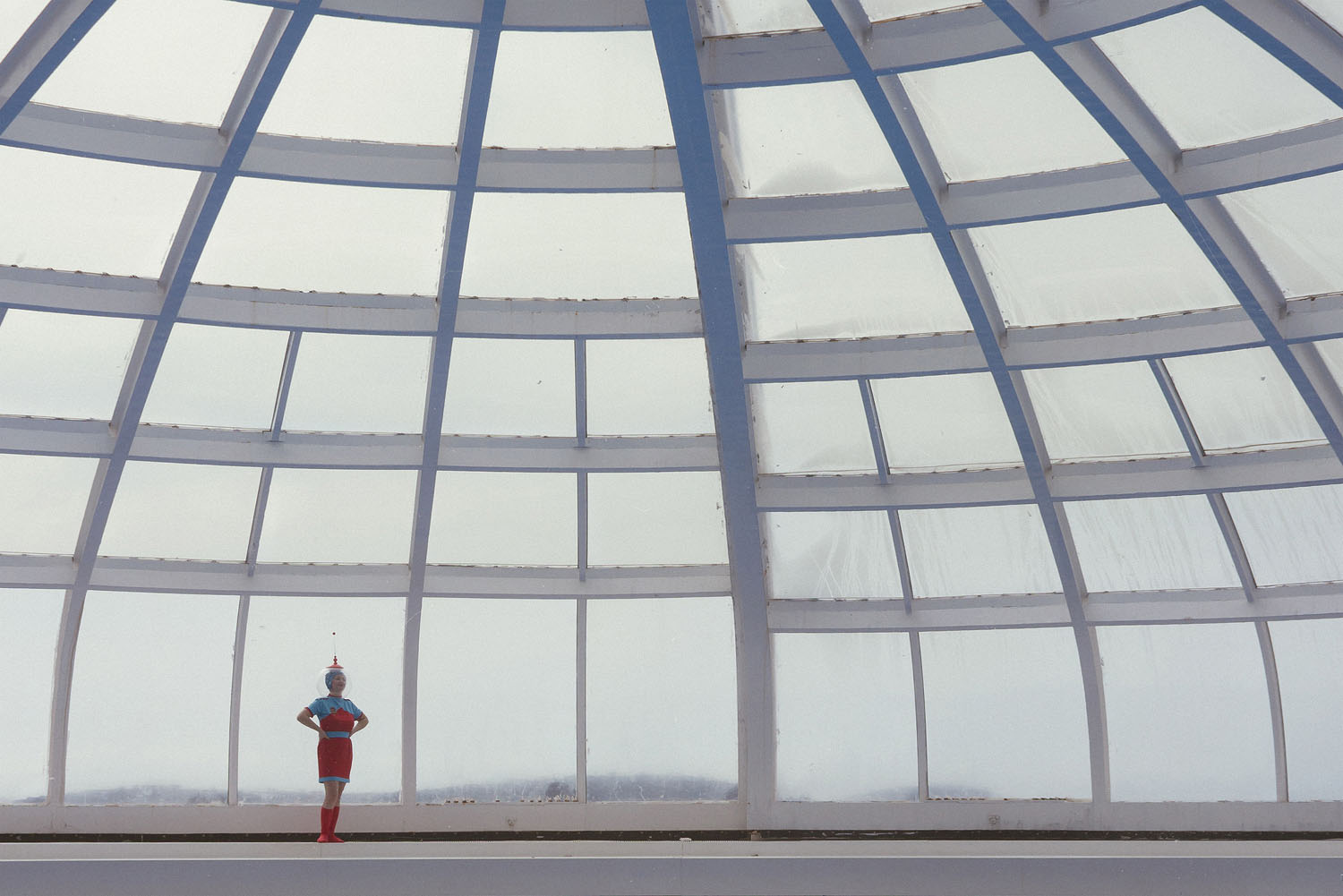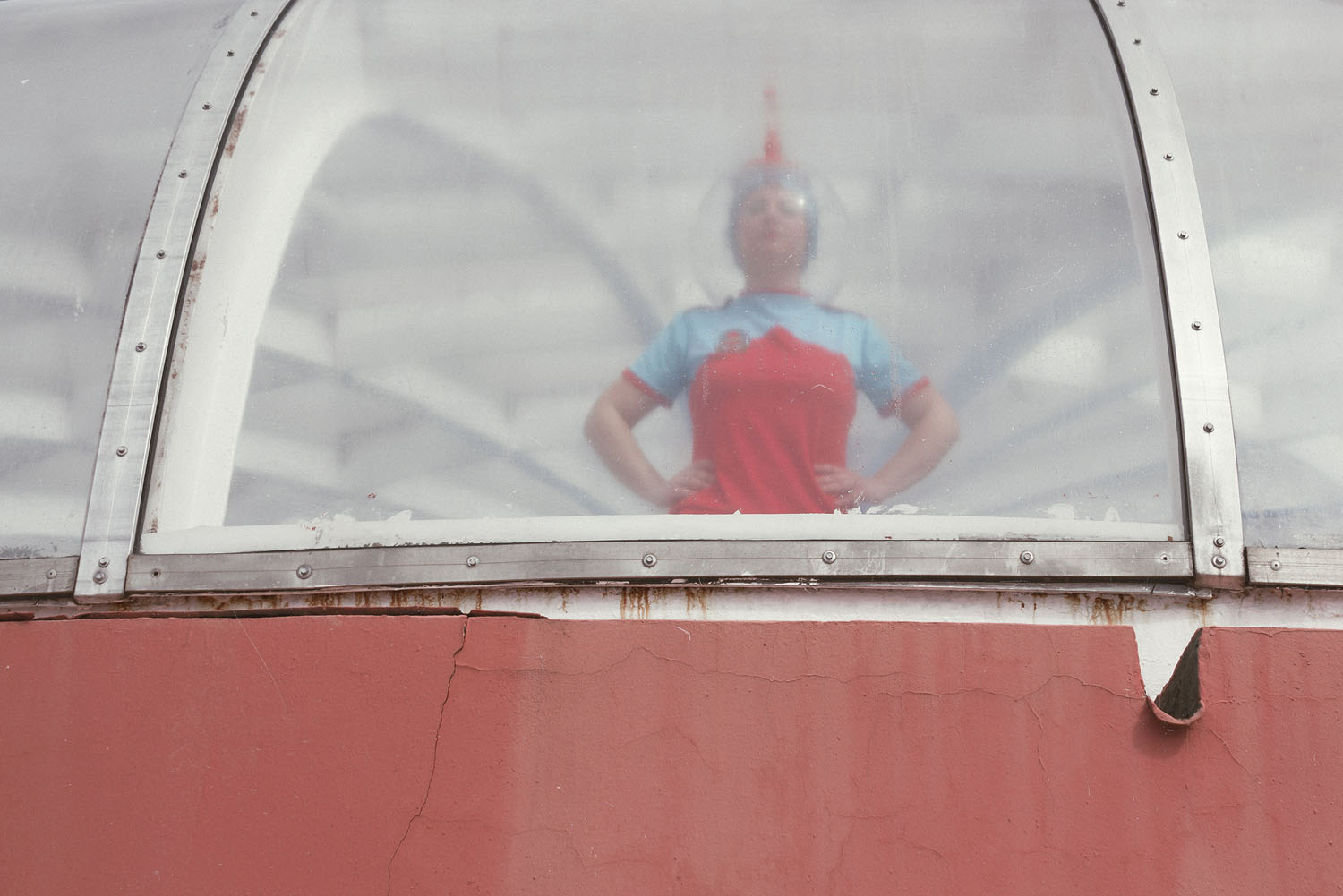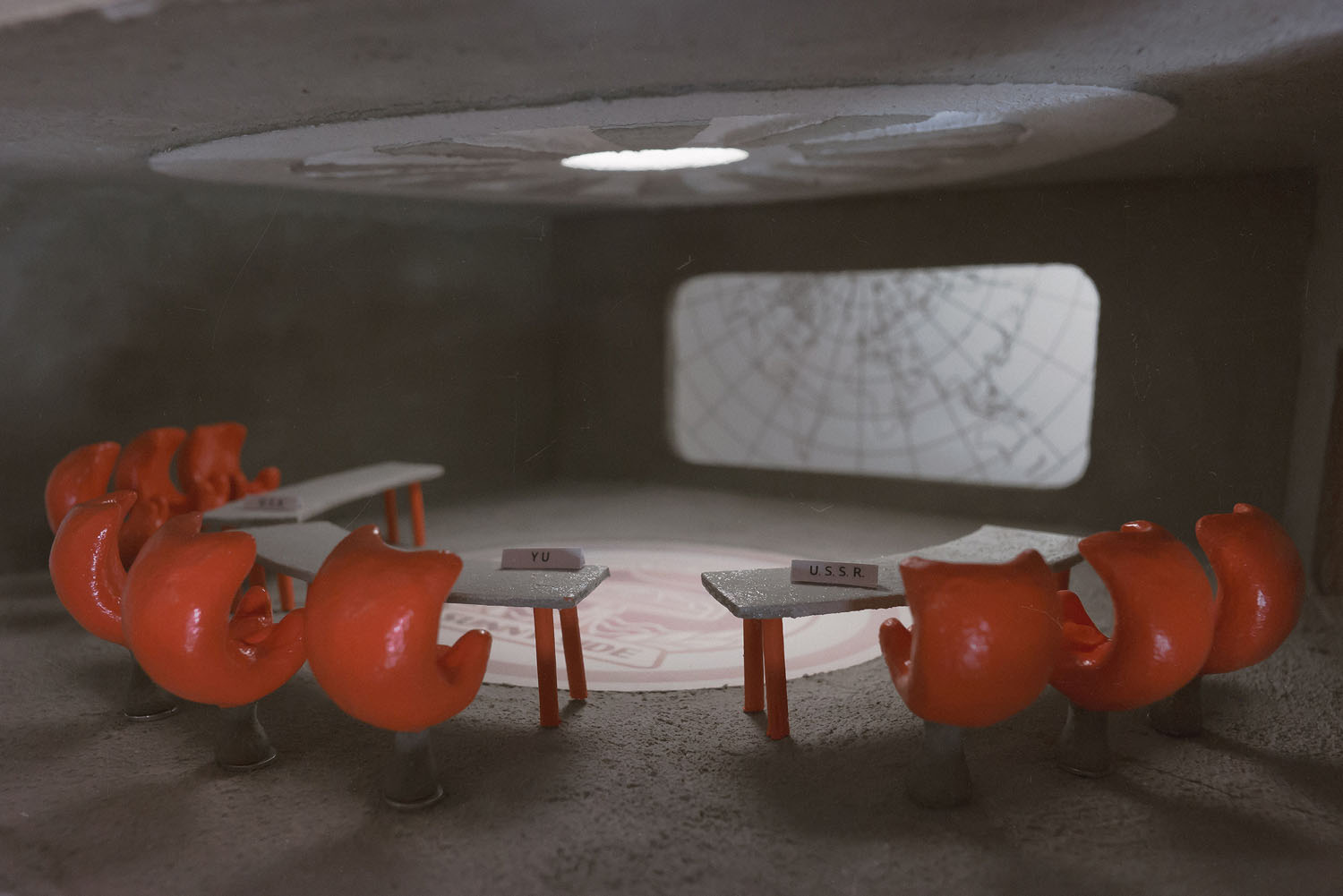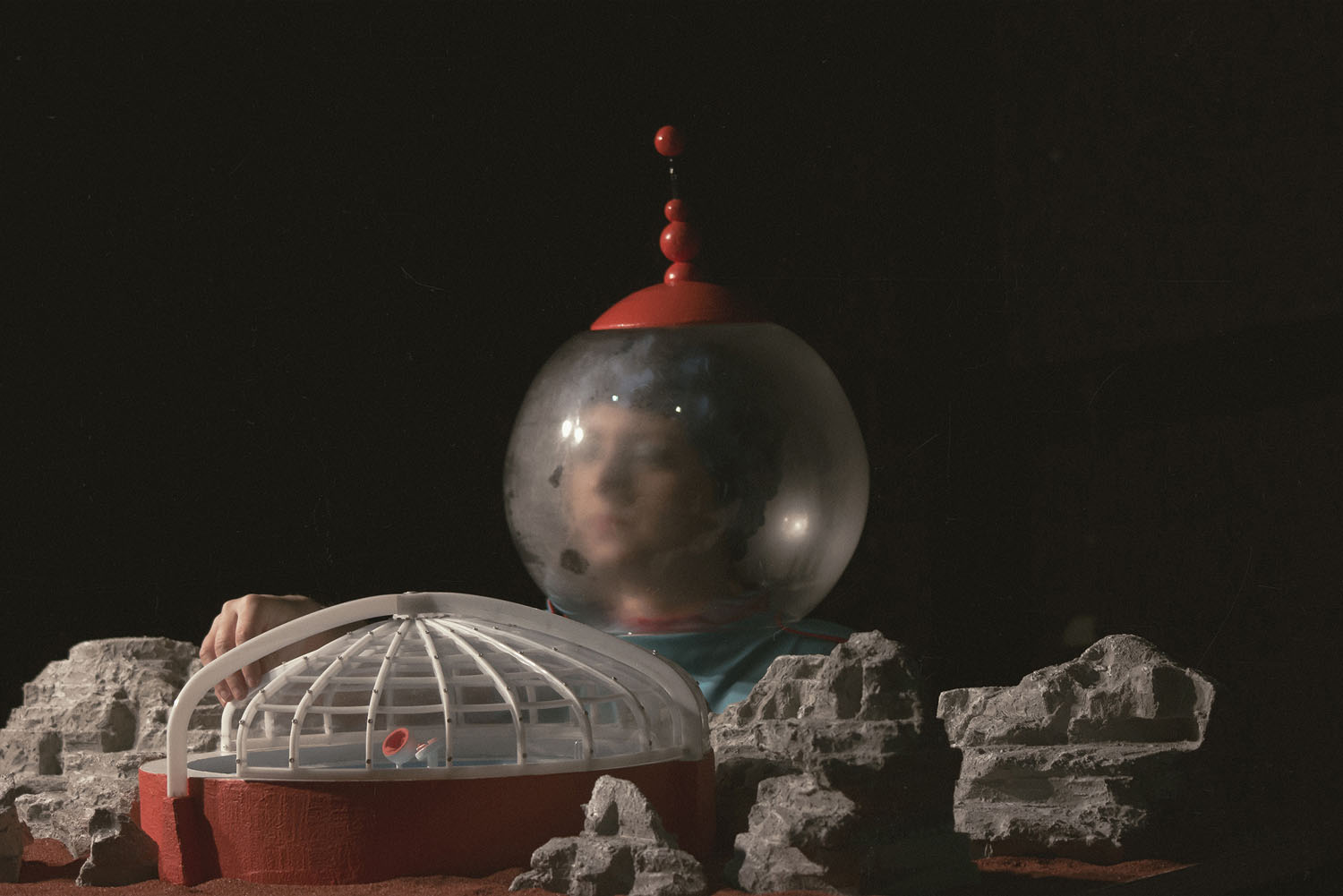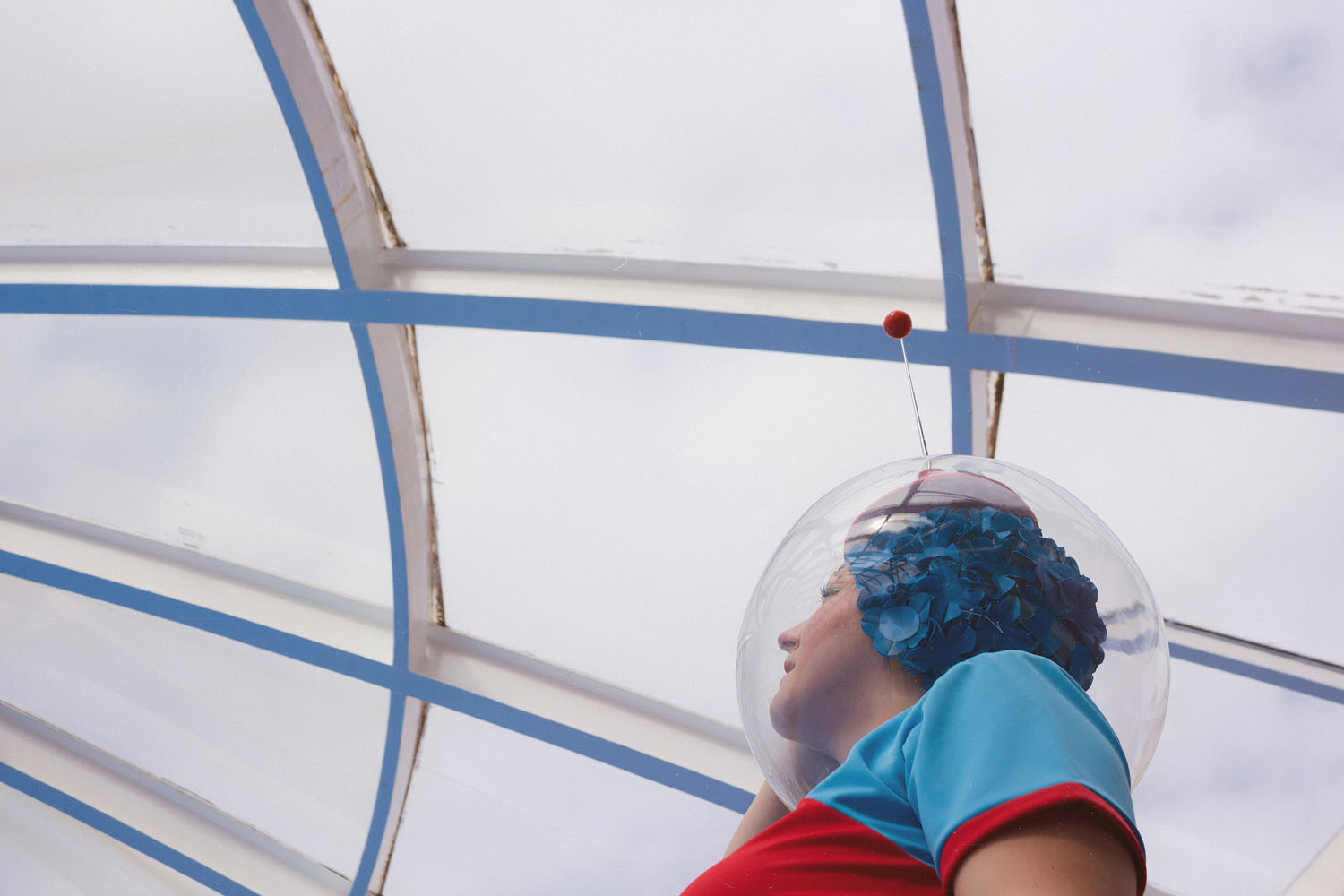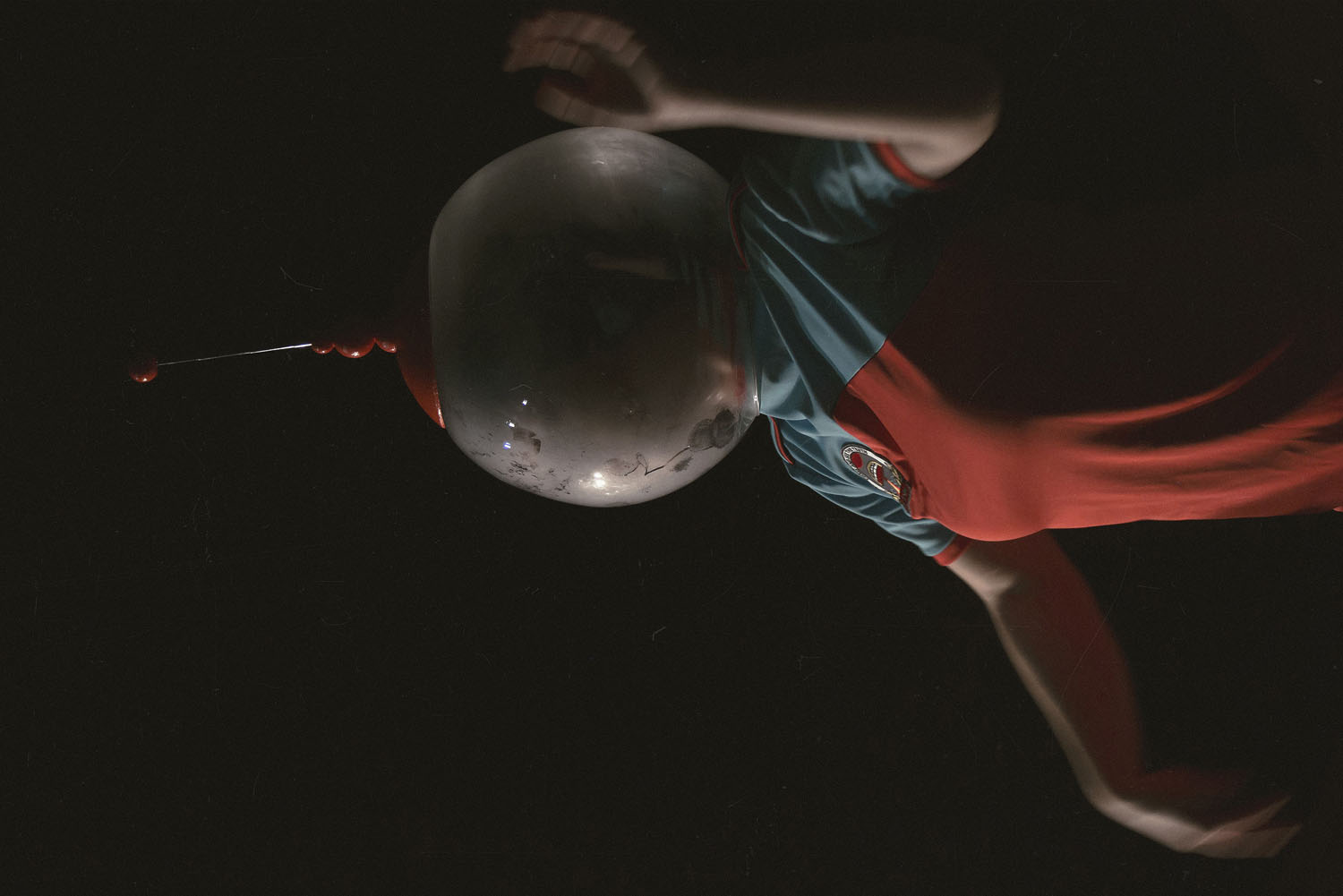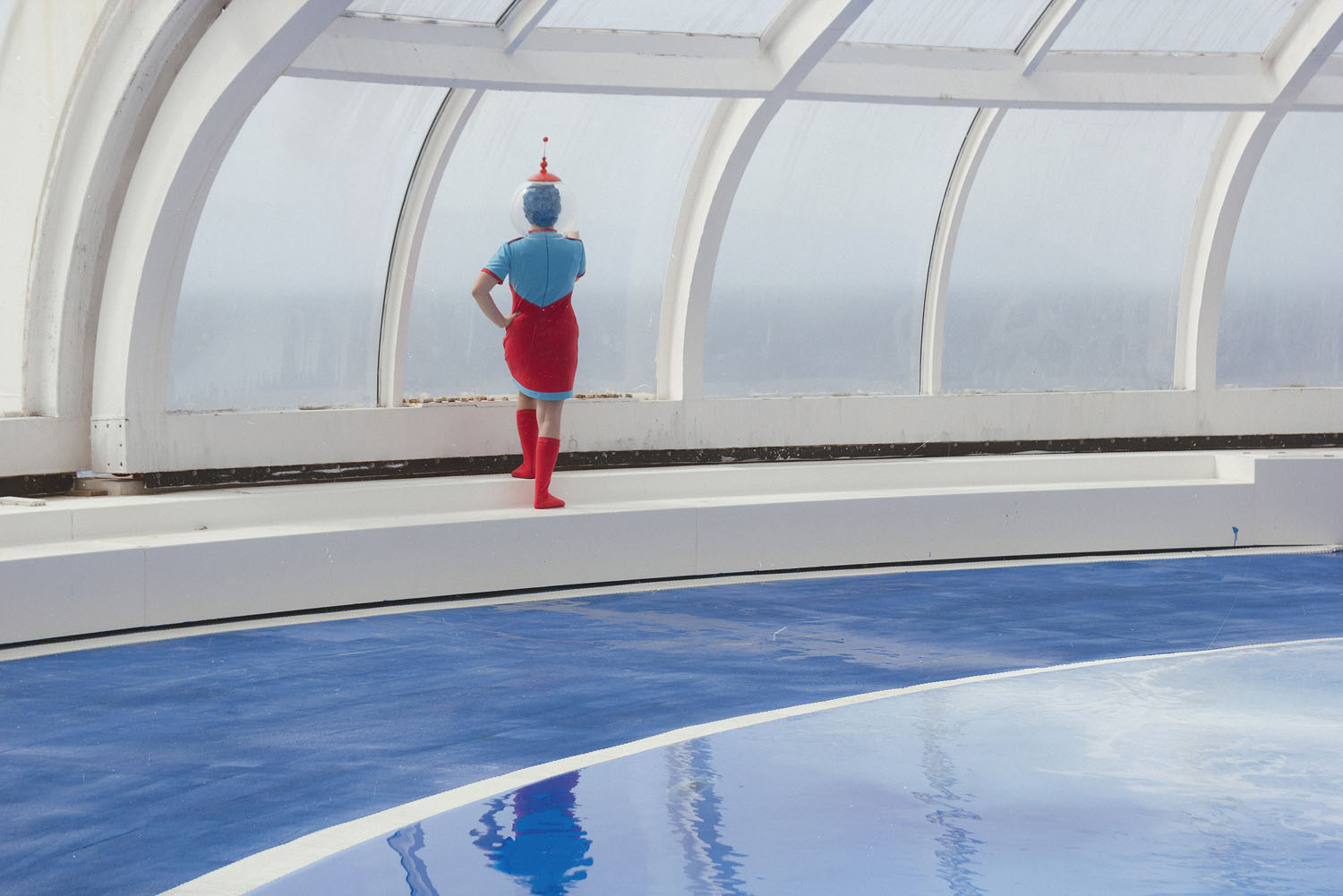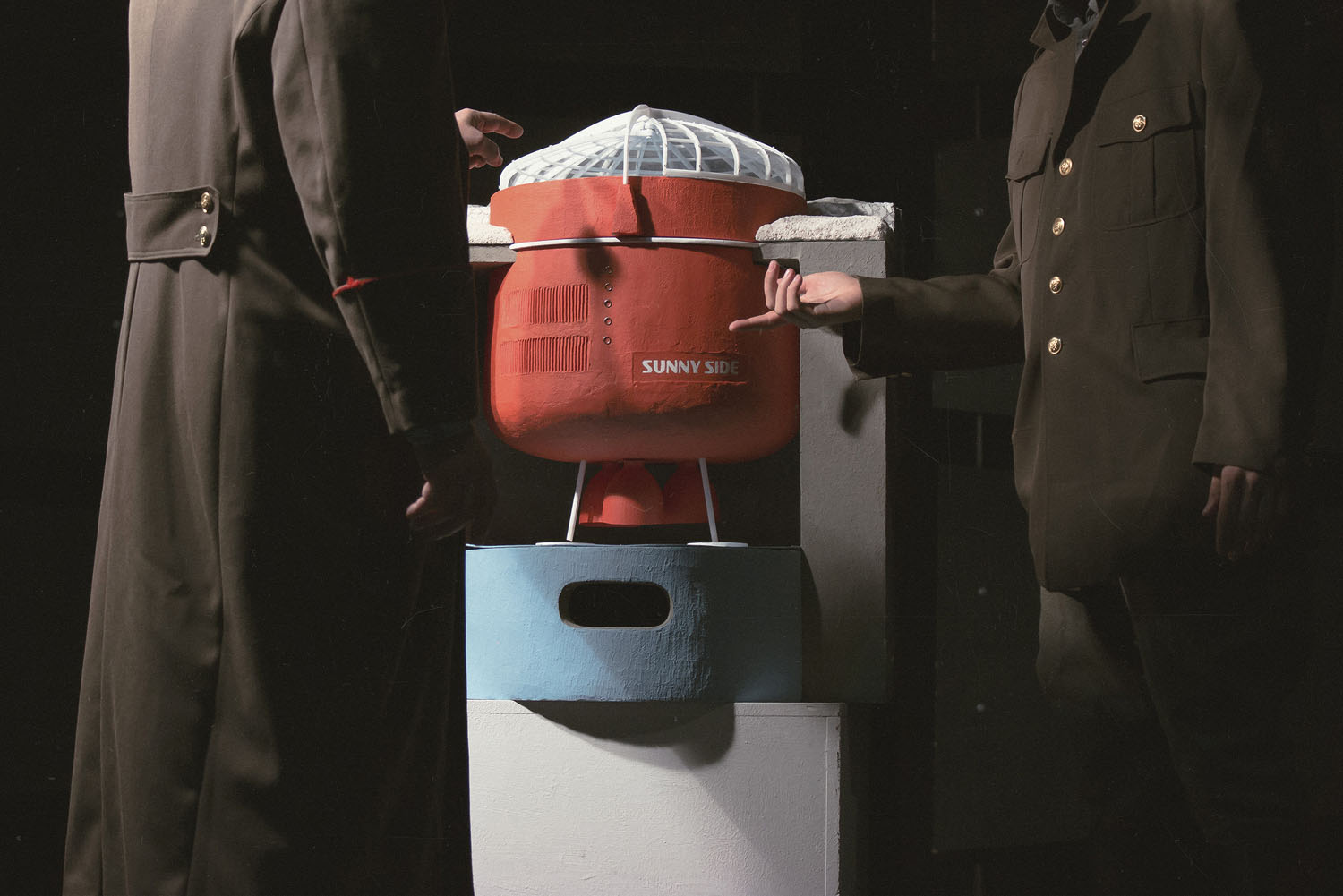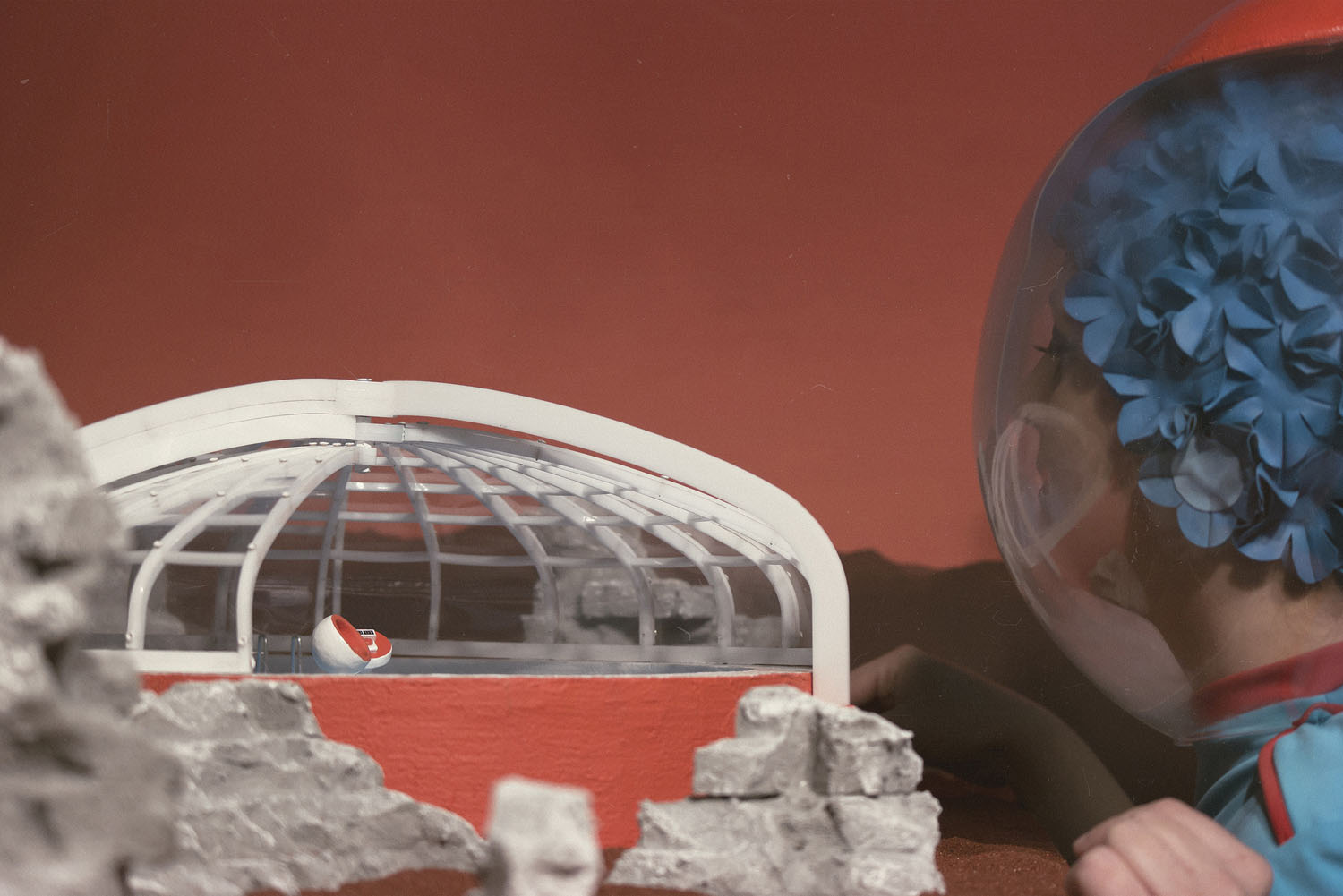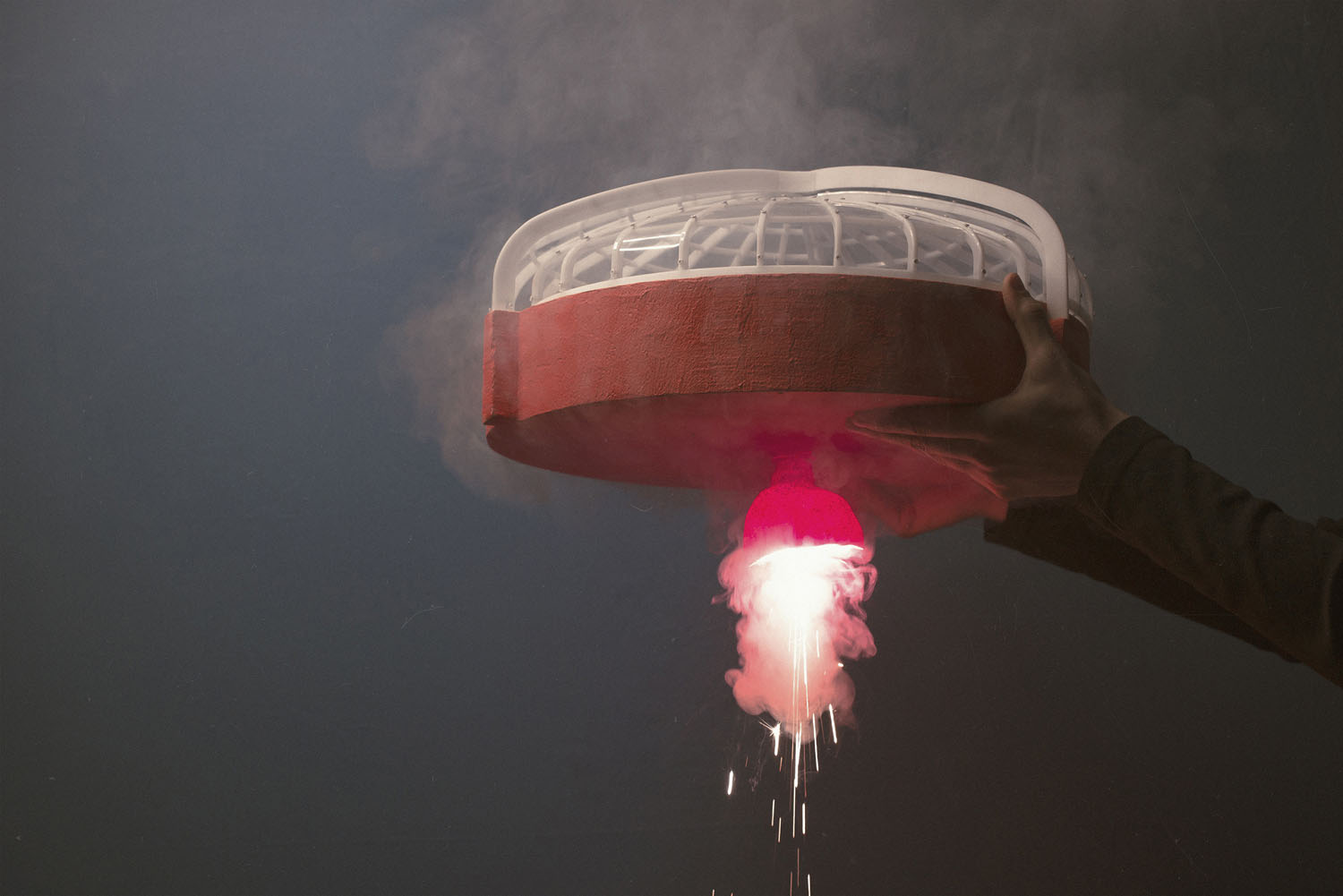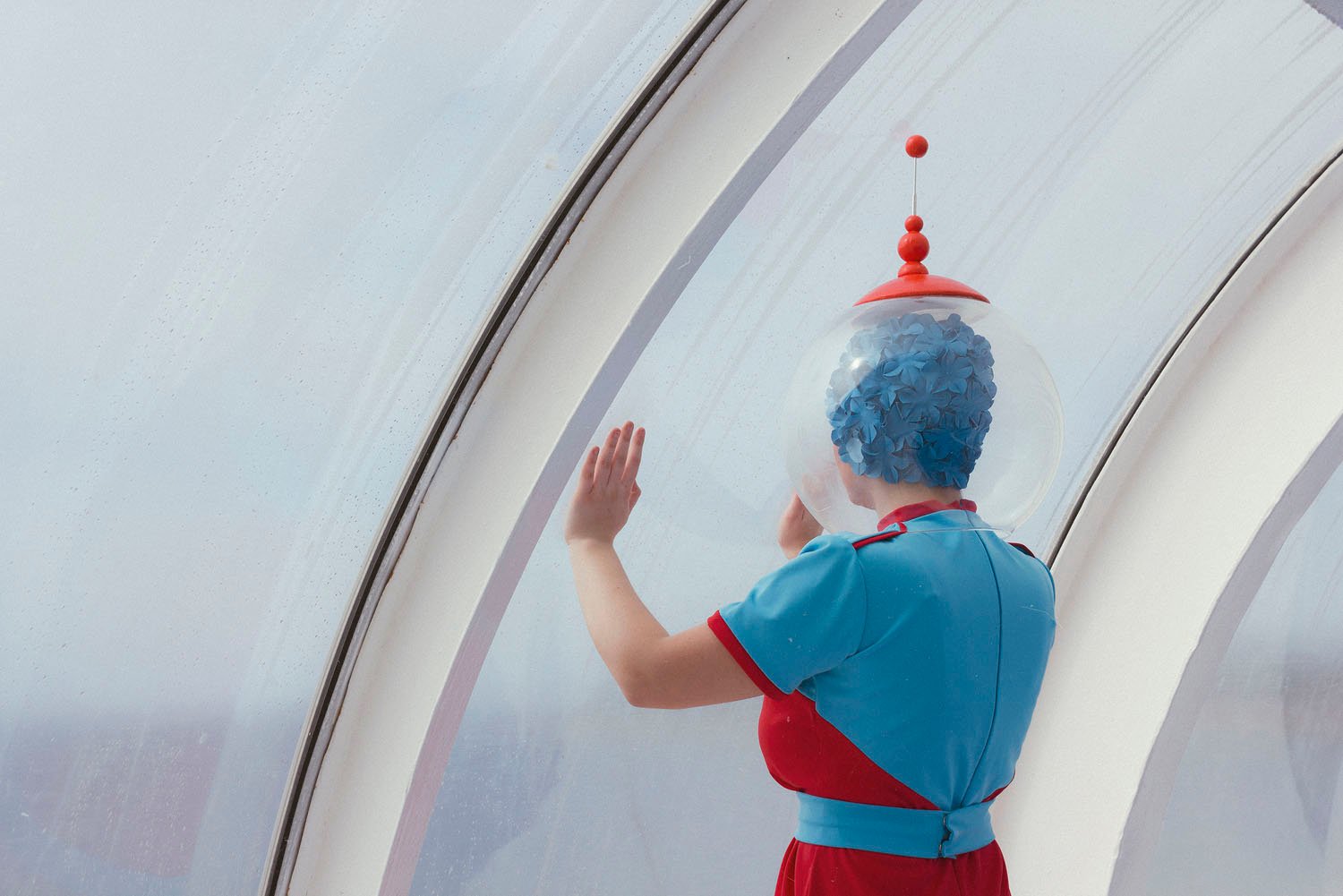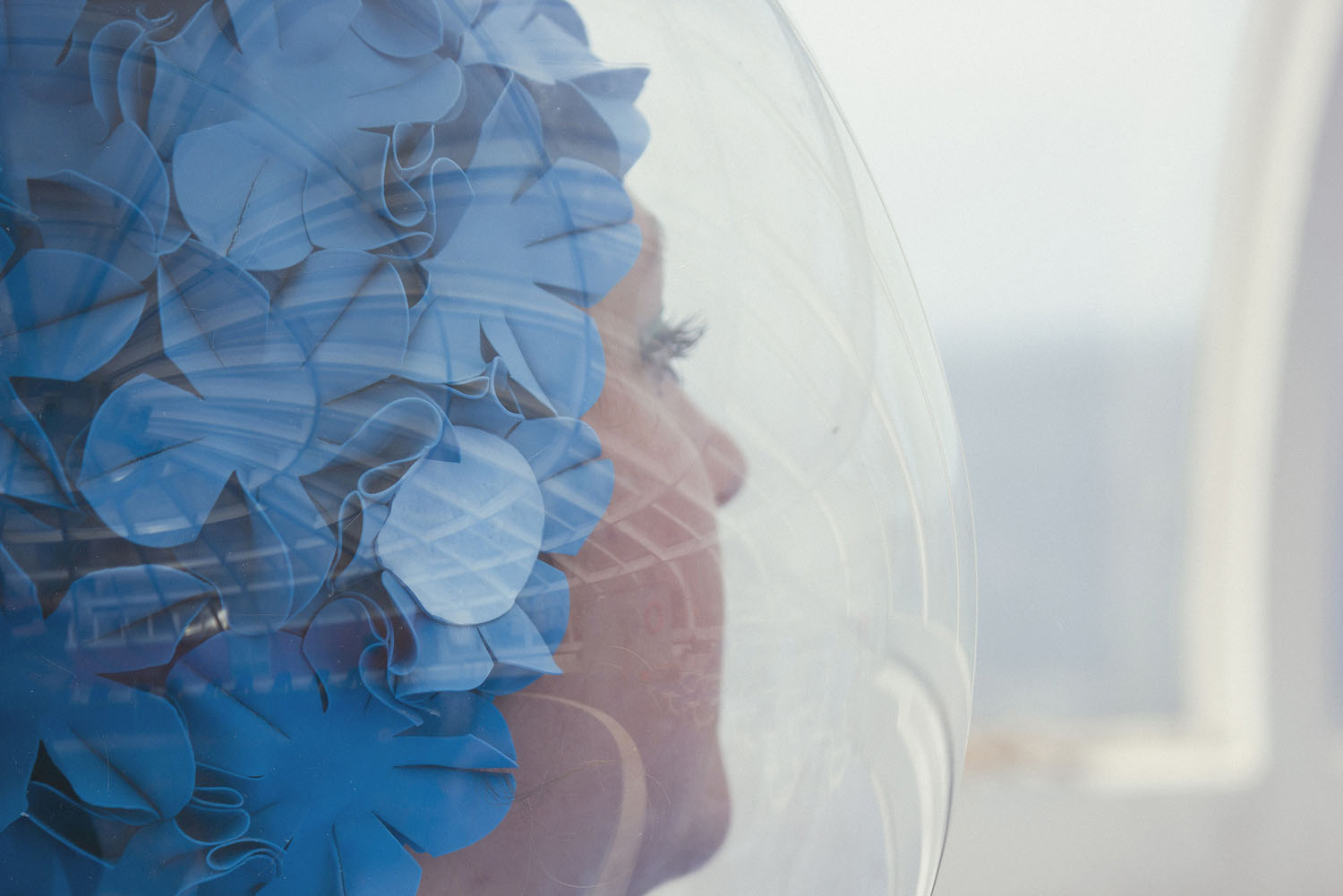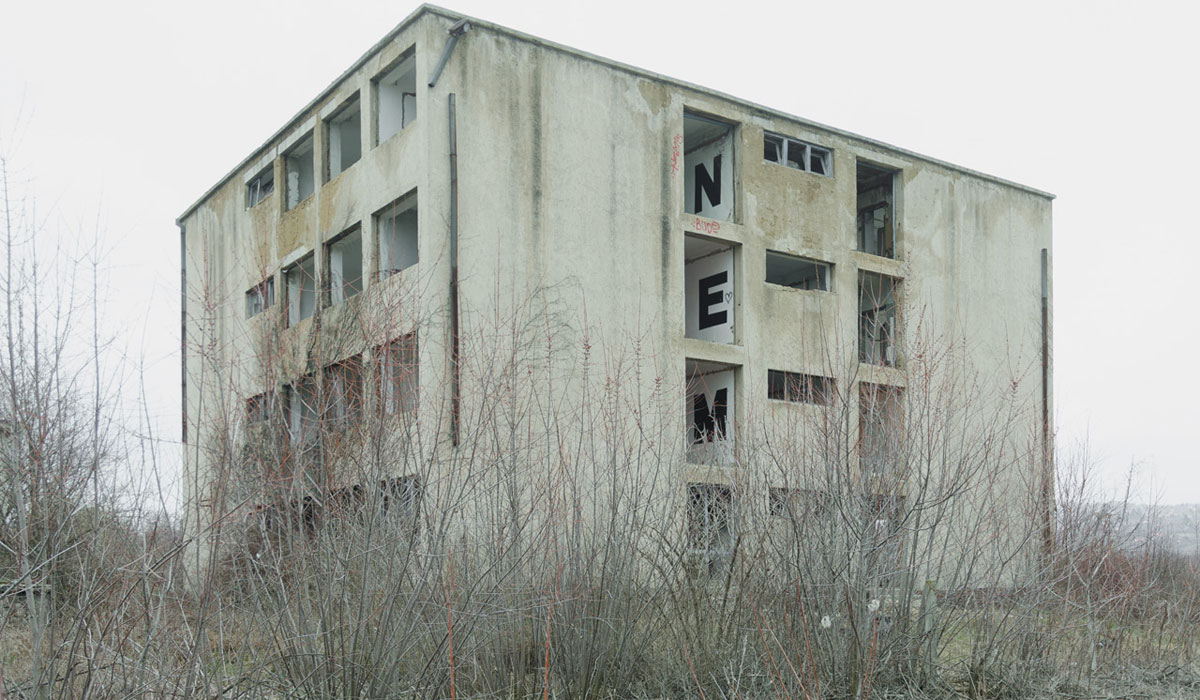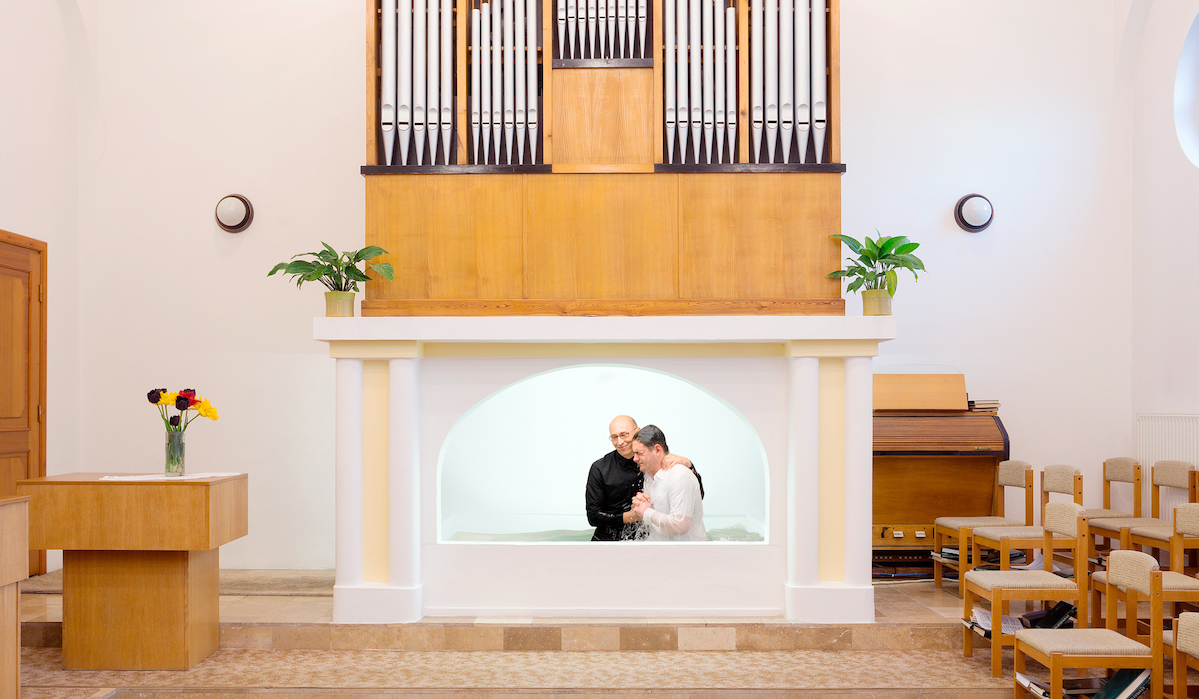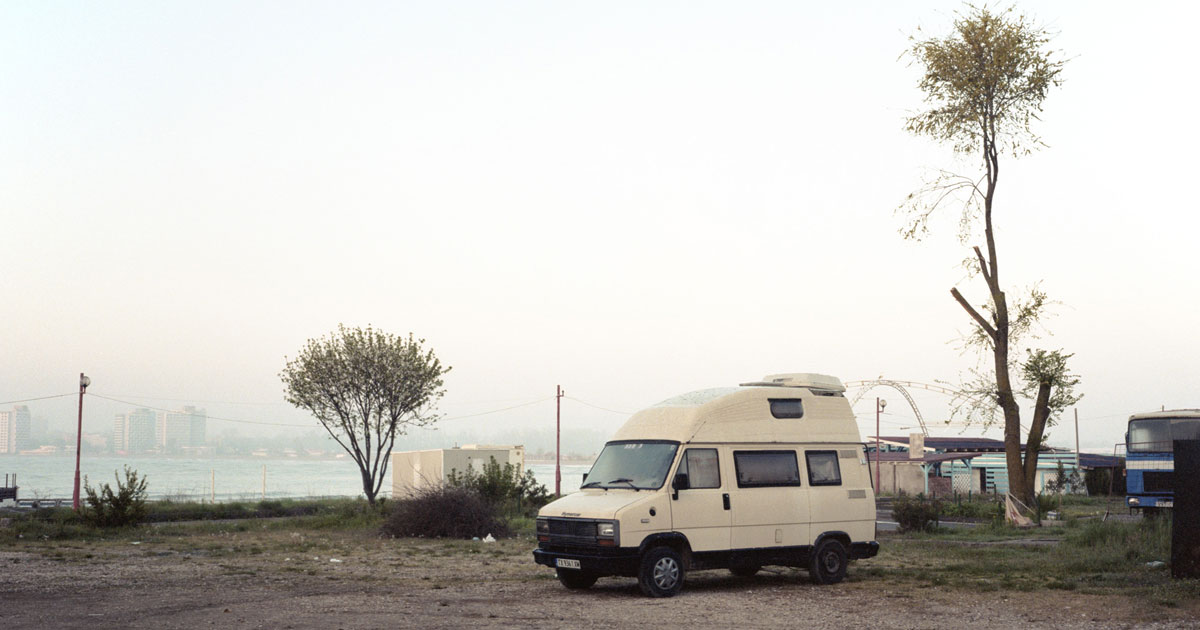Lana Stojićević: a futuristic Yugoslav swimming pool takes a step closer to space
New East Photo Prize 2018Inspired by a spaceship-like swimming pool in Primošten, Croatia, Lana Stojićević reimagines a sci-fi afterlife for the impressive Yugoslav structure
After receiving a wide range of entries from 26 New East countries, the New East Photo Prize 2018 is back with a new set of 16 finalists, with projects exploring modern-day witchcraft, graduation albums, legendary cosmonauts, contested territories and more. We caught up with the photographers to find out what drives their work. The exhibition is on display until 2 December at Calvert 22 Foundation.
Sunny Side by Lana Stojićević is set amidst the innovative design of the swimming pool of the Zora Hotel in Primošten, Croatia. Like a retrofuturistic vision, the impressive spaceship-like pool dome designed by Lovre Perković in the late 1960s looked towards a future that never came. Stojićević imagines a narrative inspired by one of its most famous guests, Orson Welles, inserting the pool into a 1960s sci-fi movie scene. Here, the pool becomes a spaceship, with the Yugoslav motto “Come and See The Truth” — which once invited foreign tourists to experience the sunny side of socialism — transformed into the slogan for a spacefaring mission named Sunny Side.
How has the place where you grew up affected your work as an artist?
I grew up in Dalmatia, the southern part of Croatia, which is defined by its Mediterranean climate, rugged coastline and fascinating history. As such, the region is full of intriguing locations that are perfect for the kind of image-making I’m interested in. In my work I try to explore the story of a particular place or add to it, using props, costumes or scale models.
Where do you find inspiration for the themes of your projects?
I usually seek inspiration in my immediate environment. My past project Black Hill, for instance, came about from my personal experience of growing up in Šibernik, next to the former Electrode and Ferroalloy Factory (TEF). I find research the most exciting part of the creative process. I am almost exclusively preoccupied with the problems of public space, from the colourful illegal housing that has spoiled the Dalmatian coast over the past 30 years to the modernist Yugoslav complexes that are neither neglected nor drastically refurbished and, as such, stripped of their brilliance. As an artist, how can you not be tempted by the futuristic spaceship-like pool that emerges from the Mediterranean seascape of your home city?
What do you think makes a compelling photo story?
The first step to making a successful photo project is to find an interesting topic, fact or story that is not too known but is something you personally care about. Afterwards, you have to figure out how the aesthetics can complement the concept. Research the topic with devotion and try to understand the subject matter and the medium of photography as deeply as possible. Make sure there is room to confuse and intrigue the viewer. I think one of the keys to a great photo story lies in creating visuals that seem strange yet familiar and universal.
Pick one photograph from Sunny Side and tell us something we would have never known about it
The photos from inside the dome were created while the hotel was in use. A few minutes before I began the photo session, the pool was brimming with excited school children. While the kids were eating lunch, a kind hotel employee helped close off the area for a brief moment and enabled me half an hour of shooting time. After a brief escape into the sci-fi realm, the pool was returned to its original function.
What was the last photo story/film/book that touched you?
Although I’m not a fan of metal music, I am very interested in the events of the 90s, especially those in Yugoslavia. I found the documentary Scream for me Sarajevo, which focuses on an almost unknown Bruce Dickinson concert in the middle of a besieged Sarajevo, quite inspiring!
How do you think Instagram is influencing photography?
I have to admit I’m really not the typical Instagram user. But as an artist, I see the value in it as a platform to present your work, an opportunity to receive feedback, post work-in-progress material and behind the scenes, which are not usually visible.
What do you think are the most overused tropes in photography?
I don’t find tropes to be problematic but rather the way they are approached. For example, Yugoslav modernist architecture and monuments like spomeniks are very popular in contemporary photography. Instead of simply documenting the artefacts, I think it’s worth thinking about how, as an artist, you can add to the narrative and expand their meaning.
